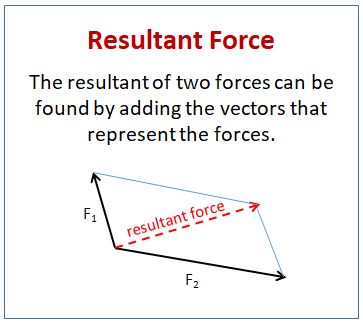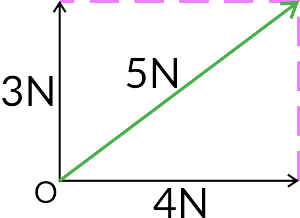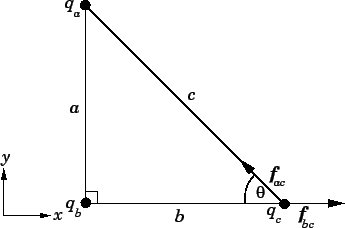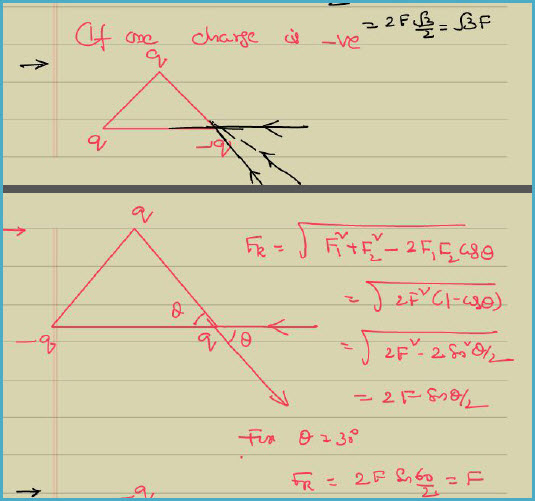Resultant Electric Force Formula

To unlock this lesson you must be a.
Resultant electric force formula. Google classroom facebook twitter. The quantity of electrostatic force between stationary charges is always described by coulomb s law. Often however we know the forces that act on an object and we need. This is the currently selected item.
Written by willy mcallister. K is the coulomb s constant k 1 4 π ɛ0 8 9876 10 9 n m c. A line of charge with q off the end. For example if a box of 1 5 kg is subject to 5 forces which make it accelerate 2 0 m s 2 north west then the resultant force is directed north west and has the magnitude equal to 1 5 kg 2 0 m s 2 3 0 n.
The electric field at a distance r from a charge q is tex e k frac q r 2 tex also remember the direction. Coulomb s law or coulomb s inverse square law is an experimental law of physics that quantifies the amount of force between two stationary electrically charged particles. Electric force exists between charges as described by coulomb s law. Look at what tiny tim said a couple of posts back.
E k q r. The resultant force is 1000 n 775 n 675 n 1100 n 0 n so the object will not be moving. F 1 80 n. Solved example of resultant force.
4 false if the resultant force is 0 then the object will not be moving. F 3 30 n. You can check with our electric field calculator that the magnitude of. If there is more than one electric force exerted on a charge find the net force by finding the vector sum of all the individual forces that act on the charge.
Which indicates that the resultant force r has the same direction as a and has magnitude equal to the product m a. Determine the fr when three forces such as 80 n 100 n and 30 n are acting on an object simultaneously and 30 n force is opposite to the other two forces. F 2 100 n. Coulomb s law gives us the force between two charges and we re just gonna put that right in here.
E is the magnitude of electric field. F3 is a negative value because it is acting opposite to the other two force. The electric field of a positive charge points away from the charge pick a point between the two charges say at a distance r 1 from charge 1 and calculate the electric field produced by charge 1 at that point. Q is the charge point.
Coulomb s law says that the electric force between two charges is gonna be k the electric. You can estimate the electric field created by a point charge with below electric field equation. The electric force between charged bodies at rest is conventionally called electrostatic force or coulomb force.

















